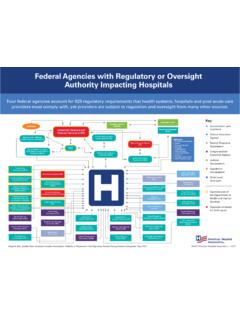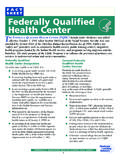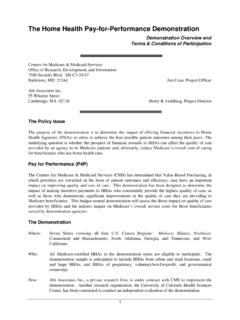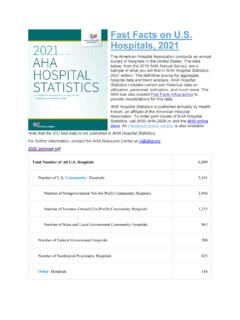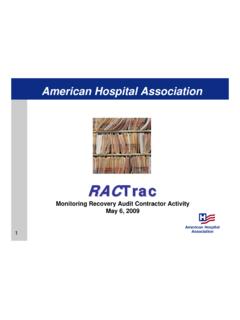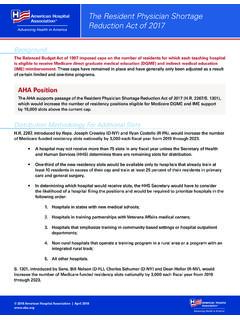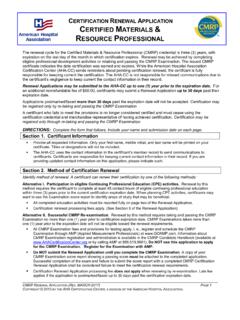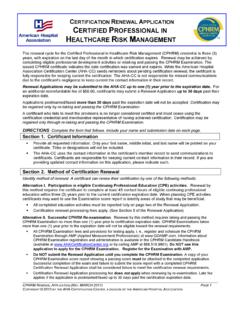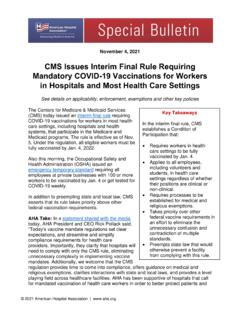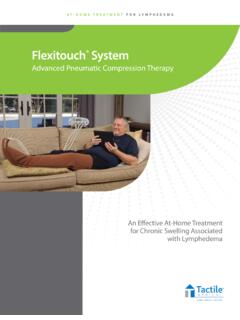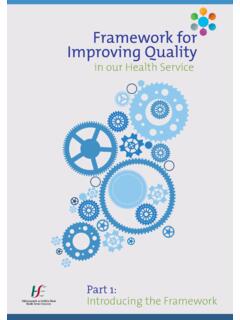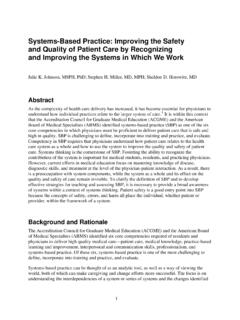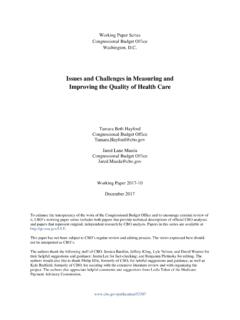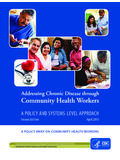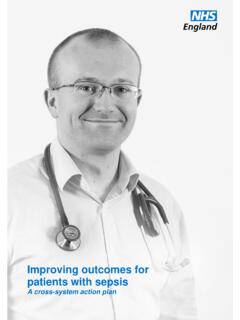Transcription of Evolving Care Models - AHA
1 MARKETINSIGHTSE volving care Models Aligning care delivery to emerging payment Models The American Hospital Association, 2019 LEARN MORE | Visit care Delivery to Emerging Payment Models2 Hospitals and health systems across the country are redesigning care delivery to improve quality and outcomes, enhance the patient experience, reduce costs and, ultimately, produce better population health . They are testing and implementing new care Models to focus on prevention and better coordinate care across the many sites of care that touch patients . The payment landscape for health care services has evolved to sup-port providers transition to new care delivery Models .
2 Over the past 10 years, payers have transitioned a growing portion of payments made to providers to alternative payment Models (APMs). Also, commonly referred to as value-based payment Models , APMs incent providers for quality and value, rather than volume. This report from the AHA Center for health Innovation provides an over-view of the successes and challenges providers have experienced in aligning care delivery Models with APMs, and provides lessons for those in the midst of this transition. Though the pace of the transition will vary by local market, payers will continue to shift financial risk to providers through more advanced payment Models .
3 health systems are committed to advancing value-based care and will need to build new capabilities to succeed under these payment arrangements. The AHA Center for health Innovation based this report on information and insights from a number of sources, including interviews with hospital and health system leaders and other health care experts, surveys of hospitals and health systems, and a number of health care reports and research arti-cles. A complete list of sources appears on Page 16 of this brief. We thank everyone for their contribution to this MORE | Visit Changing Landscape of Alternative Payment Models KEY POINTST oday, more than a third of health care payments are value based, up from 23 percent in 2015.
4 This significant shift from traditional fee-for-service (FFS) reimbursement Models has been fueled in large part by the Medicare program, which has rolled out a number of programs that shift payment toward value, including the Medicare Shared Savings Program (MSSP) in 2011. The passage of the Medicare Access and CHIP Reautho-rization Act (MACRA) of 2015, which made sweeping changes to how Medicare reimburses physicians for their services, created an additional platform to drive APMs in Medicare. APMs vary in the degree of financial risk they transfer to pro-viders, and most providers today assume relatively low levels of risk.
5 This approach provides stability to providers as they build up the re-quired capabilities for taking on higher levels of have gained significant traction in recent years, driven in large part by government are juggling the challenge of developing the capacity to operate success-fully in shared-risk payment Models , while still caring for significant num-bers of patients in fee-for-service of APMs in Medicare20102018201620152012 Passage of Affordable care Act, mandating Medicare Shared Savings Program (MSSP) and Bundled Payments for care Improve-ment (BPCI) initiatives. The MSSP contains upside only and upside/downside risk tracks.
6 BPCI requires providers to accept financial risk but allows choice between prospective or retrospective of Next Generation ACO, allowing experienced ACOs to take on greater downside risk than Pioneer ACO or MSSP. Start of ACO Investment model offering additional support for providers in rural and underserved of MACRA, tying a portion of most providers Medicare payments to quality and/or value. Providers may choose one of two tracks: (1) Merit-based Incentive Payment System (MIPS), a pay-for-performance program, or (2) Advanced APMs, which include a discrete number of Models selected by the Cen-ters for Medicare & Medicaid Services (CMS).
7 Launch of the MSSP and Pioneer Accountable care Organizations (ACO) model , a program for providers accepting higher levels of downside risk than the of MSSP and BPCI programs, creating shorter glide path for providers to assume downside risk under MSSP and standardizing payment model under : Patient Protection and Affordable care Act; Medicare Access and CHIP Reau-thorization Act of 2015 (MACRA); Medicare Shared Savings Program, available at ; CMS Finalizes Pathways to Success, an Overhaul of Medicare s National ACO Program, available at ; BPCI Advanced, available at APM Models that States are Testing LEARN MORE | Visit Medicaid programs are also putting substantial pressure on plans (in Medicaid managed care ) and providers to transition payments to APMs; most states have some type of APM or care delivery model in place ( , ACO, medical home, etc.)
8 , and many include mandatory value-based payment targets in their contracts with Medicaid managed care Private Payers are Doing with APMsMovement toward APMs is also accel-erating in the commercial market. For example, the health care Transformation Task Force, a consortium representing key payers and providers that includes Aetna, Anthem, several state-level Blue Cross Blue Shield plans, Geisinger, Kaiser Permanente and Sentara Healthcare, had nearly 50 percent of its provider and payer members payment arrangements in APMs by the end of 2017 and aims to reach 75 percent by 2020. A small but growing number of employers including Boeing, Intel and Walmart are experimenting by directly contracting with health systems for certain groups of employees and/or through center of excellence programs, which typically negotiate bundled-payment arrangements with a limited number of high-quality, low-cost providers for specific episodes of certain cases, public and private payers are working together at both the national and state levels to align payment Models .
9 For example, the Comprehensive Primary care Plus model currently has 56 participat-ing payers across 18 geographic regions. 4 APMs in MedicaidTENNESSEE: The state requires Medicaid managed care organizations (MCOs) to make bundled payments to providers for 75 different episodes of care . In its first year of operation, the program reduced costs for covered episodes by $ million and, in 2016, the program reduced costs by $ CAROLINA: The state is preparing to transition its Medicaid program from a fee-for-ser-vice delivery system to managed care in late 2019 and has established an Advanced Medical Home (AMH) program to strengthen the role of primary care practices in care management and quality improvement.
10 The AMH program will initially include three participation tiers, with AMHs in higher tiers responsible for greater levels of care management and eligible for care management fees and incentive payments based on a standardized set of quality measures. Sources: TennCare s New Approach to Payment Shows Savings, ; Strategic Planning & Innovation, Division of TennCare, ; North Carolina s care Management Strategy Under Managed care , North Carolina Department of health and Human Services, : The Arkansas health care Payment Improvement Initiative brings together both public and private payers, along with Walmart, the State and Public School Employee Benefits program, and other self-funded employers, to promote patient-centered delivery Models across the state and includes both medical home and episode-based payment programs.
